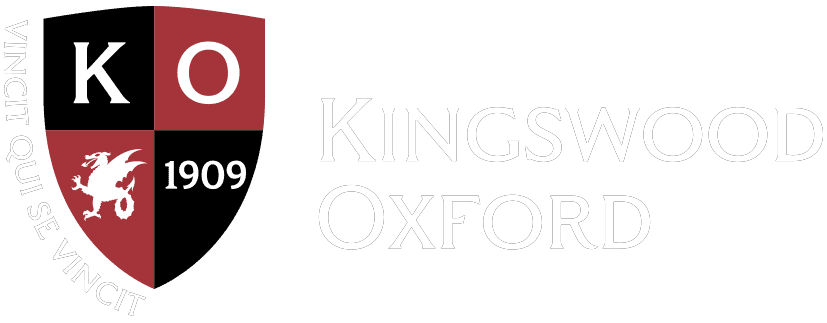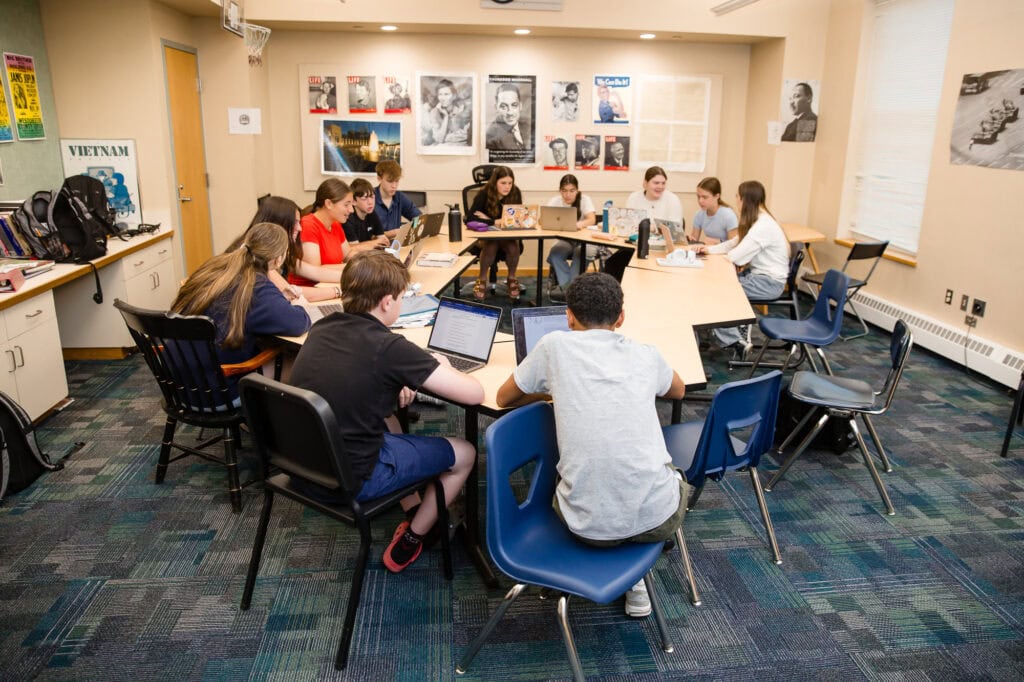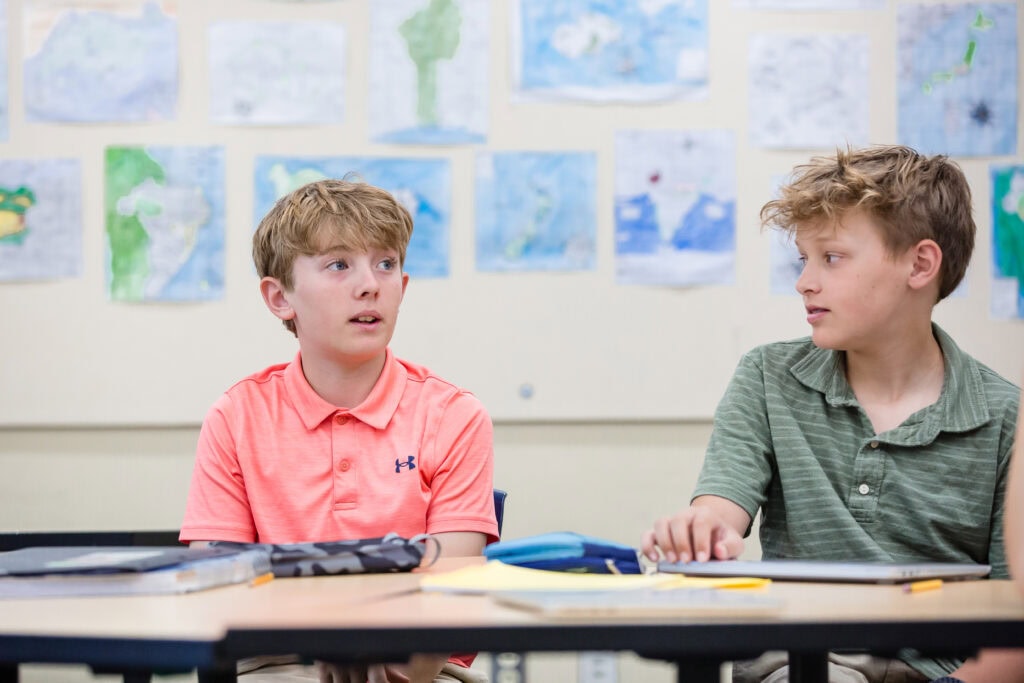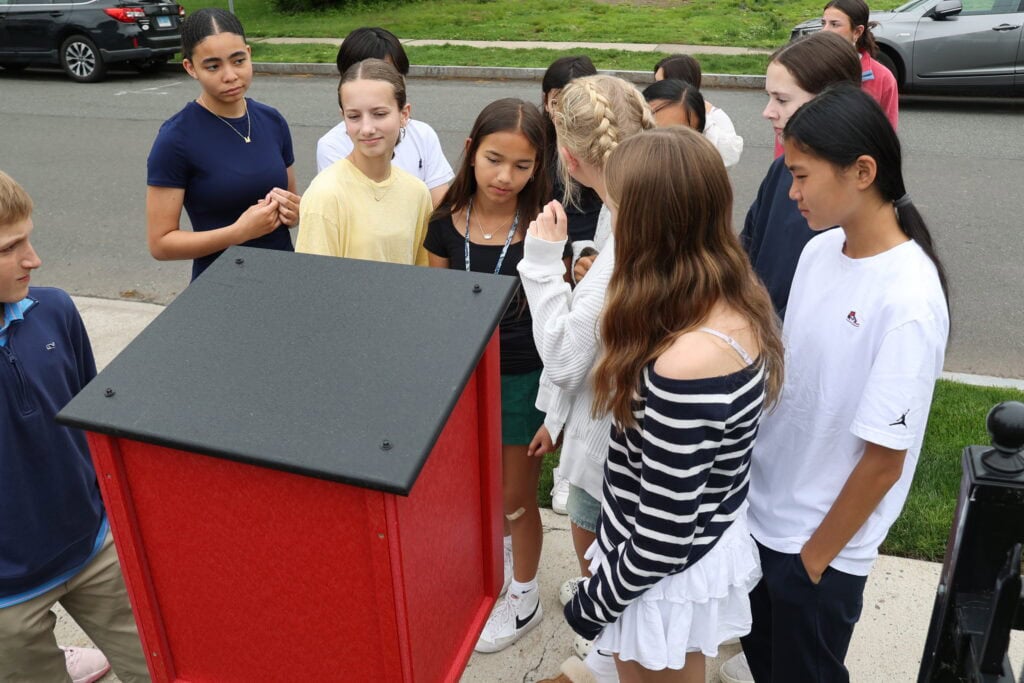MS Course of Study
Nurturing a Love of Learning
What a Difference a Curriculum Makes
Our teachers have created a relevant, hands-on curriculum in a stimulating classroom environment where students experience belonging and are comfortable taking academic risks. Kids connect with each other and their teachers with interesting and meaningful content that makes sense to a middle school student.
Our students embrace the process of learning, a lifelong skill. They engage and dive deep into our curriculum through creative problem-solving that leads to student-driven discussions on the reasoning behind the result. Whether a research paper, a lab report, or a blog post, students’ writing and analytical skills are enhanced with every course they take.
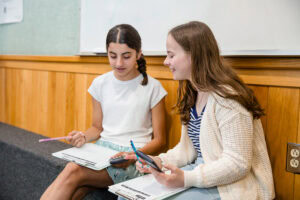
Students learn how to learn
Highlights:
The Presentation of Ideas:
Students are taught to present their ideas with clarity, competence, and confidence via:
- Oral Communication
-
Writing
-
Visual Expression
Skills:
Students are taught skills in every discipline, helping them discover their strengths and challenges through:
- Organization
- Time Management
- Reflective Self-Assessment
Building Skills,
Expanding Minds
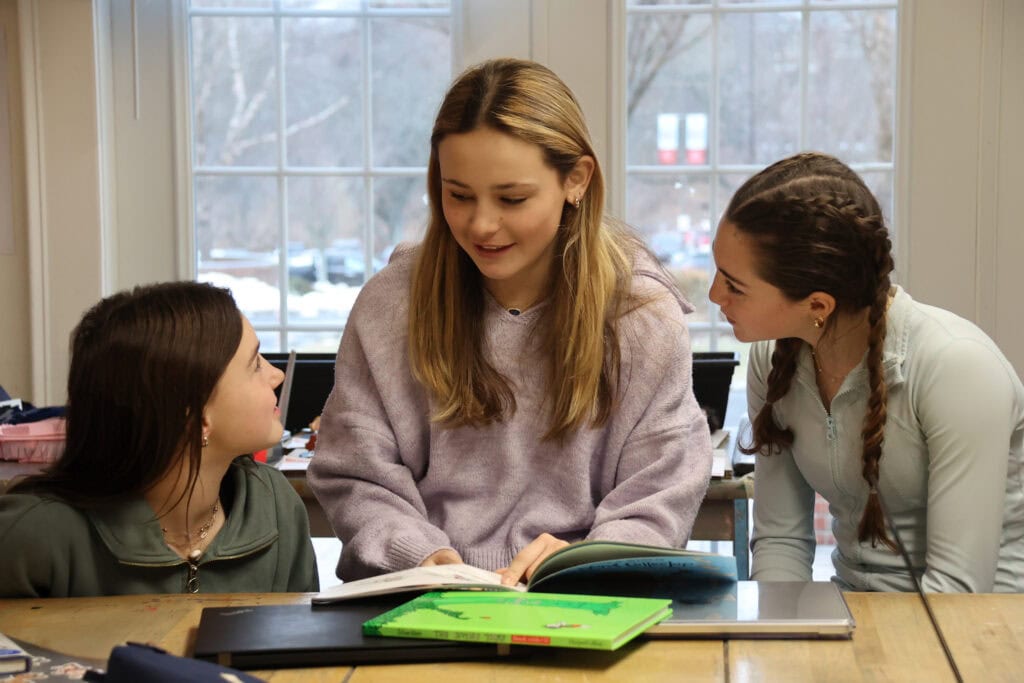
Middle School Curriculum
Curricular Themes
Our curriculum offers a variety of foundational subjects, co-curricular opportunities, and an affective curriculum. These themes are embedded across the curriculum in all three Forms to guide students in the process of “knowing themselves.”
Upper Prep (Grade 6)
Parts of Whole
the integrated nature of science, community, life
Form 1 (Grade 7)
Questioning
exploring the why and the how

Form 2 (Grade 8)
Ownership
taking responsibility by fully engaging

Upper Prep (6th grade)
English
Spider Web discussions establish literary and communication skills
Read the course descriptionUpper Prep English — Building Community
The goal of Upper Prep English is to teach reading and writing skills through literature in a nurturing environment that encourages students to become comfortable and confident in those areas. Students learn the concepts of plot, theme, setting, and character development through their reading of short stories, novels, non-fiction pieces, and poetry. The focus on reading and writing includes grammar, sentence building, and vocabulary development. Students practice expository, narrative, and descriptive compositions in order to develop clear sentence structure and coherent paragraph development. We introduce and emphasize process writing, and students learn to brainstorm, draft, revise, edit, and publish their work. Spider Web discussions establish the skills necessary to explore and discuss literature as well as the development of active listening and speaking skills. We use various texts, voices, and perspectives to develop and deepen the aforementioned skills.
History
Study the relationships between people and the earth
Read the course descriptionUpper Prep: Geography and Culture
In this course, students become familiar with the questions and tools of the geographer. Their study of the world helps them to better understand the relationship between people and the earth. The course looks at how the physical environment has influenced people and how people have changed the land. Using the UN Sustainable Development Goals, students also explore what it means to be a global citizen in the twenty-first century. Research and writing assignments as well as projects and presentations help students study relationships between countries, develop greater cultural understanding, and look at how international politics play a part in addressing world issues.
The latter part of the year revolves around the Upper Prep Community Course:
What makes a community strong? In this interdisciplinary course involving science, English, and geography, students will explore the many facets of various types of communities. Through this study, students will better understand how communities function and the challenges of living and working together. They will explore the natural community of KO and the greater Hartford area, and they will look at what makes communities sustainable both globally and locally. Students will explore the role an individual plays within a society by reading The Giver. As a culminating project, students will interview key stakeholders at KO and apply their understanding as they develop a proposal to strengthen and/or enhance our community in some way.
Mathematics
Active learning to connect key concepts and big ideas
Read the course descriptionUpper Prep Mathematics
In Upper Prep Mathematics, students are asked to look for patterns, estimate, comprehend data, reason, and problem-solve. Students interact with teachers to do hands-on, rich experiments and must be prepared to be part of an active learning process. Working in pairs, in larger groups, and on their own to discover new methods of solving problems, students deepen their understanding of mathematics. They are often asked to justify their answers and thoughts. “How?”, “Why?” and “What if?” are just as common as “What is the answer?”
Students learn to discuss, conjecture, validate, generalize, extend, connect, document, and communicate. As a result, students develop a deep understanding of concepts and the inclination and ability to reason and make sense of new situations, including applications to the real world through the KO and local communities. Students learn about algebra, geometry, measurement, number, and operations. There is an emphasis on making meaning of the relationships between numbers and being able to connect key concepts and big ideas. The curriculum is integrated so that Upper Prep students understand and recognize the correlation between different topics in mathematics. To be successful, Upper Prep students are expected to have a working knowledge of basic facts.
Science
Innovative thinking through scientific inquiry and project-based learning
Read the course descriptionUpper Prep Science
This course begins with an in-depth study of the cell. The students will learn about the structure and function of the cell, including cell organelles, how cells move materials in and out and how cells divide. They will then study DNA, including its structure and function, along with the processes of replication, transcription, and translation. Finally, the students will learn the basics of genetics, focusing on heredity and the transmission of traits from parents to offspring, with themselves as the focal point. All areas of study are done through scientific inquiry and project-based learning.
The latter part of the year revolves around the Upper Prep Community Course.
What makes a community strong? In this interdisciplinary course involving science, English, and geography, students will explore the many facets of various types of communities. Through this study, students will better understand how communities function and the challenges of living and working together. They will explore the natural community of KO and the greater Hartford area, and they will look at what makes communities sustainable both globally and locally. Students will explore the role an individual plays within a society by reading The Giver. As a culminating project, students will interview key stakeholders at KO and apply their understanding as they develop a proposal to strengthen and/or enhance our community in some way.
Modern Language
Full-immersion style Options: Spanish & French
Read the course descriptionAll Middle School students must choose a modern language or Latin to study, and they are placed in a level based on their background and language mastery. Placement tests are available to new students who have taken the language as a core academic course at their previous school to determine if they are ready for the next level.
Spanish A
Spanish A is an introductory course that assumes limited experience with the Spanish language. During the year, students will simultaneously develop speaking, reading, and listening skills that will allow them to express ideas accurately and confidently. Students will be able to greet others, express personal preferences, discuss what they are studying in school, talk about sports, and describe their family and their relationships. They will also learn to recognize and manipulate various grammatical structures, including regular verb conjugations in the present tense, expressing negation, articles, adjective agreement, forming questions, and basic sentence structures. In addition, through the use of authentic materials, students will be introduced to Hispanic culture throughout the world, and they will use technology, both in the classroom and at home, for an engaging and interactive experience.
French A
French A is an introductory course designed for novice learners of French. Students will develop speaking, reading, writing, and listening skills that will allow them to express ideas accurately and confidently. They will use their new vocabulary and grammar to create authentic skits and dialogues similar to situations they would experience if they traveled to a francophone country. Students will be able to greet others, express personal preferences, discuss what they are studying in school, and talk about their families. They will also learn to recognize and manipulate various grammatical structures, including regular verb conjugations in the present tense, expressing negation, articles, adjective agreement, forming questions, and basic sentence structures. In addition, students will be introduced to francophone culture worldwide, and they will use technology, both in the classroom and at home, for an engaging and interactive experience.
Classics
Study Latin and Greco-Roman culture
Read the course descriptionAll Middle School students must choose a modern language or Latin (Classics) to study, and they are placed in a level based on their background and language mastery.
Latin A
In Latin A, students begin to explore the language, culture, and history of the ancient Rome world. Students are introduced to the Latin language via reading, translating, writing, and listening as well as through playing games and interacting with each other in English and Latin. Students develop the ability to analyze language, think and read critically, and recognize the Latin roots of many English words. The readings in the program’s selected platform, Cambridge Latin Course, are designed to both enhance students’ Latin reading fluency and to familiarize them with various aspects of the ancient Roman world. Cultural studies in Latin A focus on daily life in the Roman city of Pompeii, including housing, entertainment, and dining practices. Through various hands-on projects, students learn about the everyday practices and spaces of the ancient Pompeiians. Throughout the course, students are encouraged to make connections between their own modern lives and those of the ancient Romans. Among other projects, students create a 3D or digital model of a typical Pompeian house.
Creative Arts
Music, theater, visual, and media arts
Read the course descriptionUPPER PREP
All courses are required for all Upper Prep students.
Introduction to Drama (Quarter)
In this course, students are exposed to the fundamentals of drama with an emphasis on fun, creativity, teamwork, and building self-confidence. Students begin to appreciate musical theater through broadway media, getting a “behind the scenes” look at the process of creating theater and interdisciplinary skills. Students may engage in acting games and exercises that promote a triple-threat curriculum (singing, acting, and dancing). Students begin by appreciating musical theater media, followed by reading a class play together, and finally culminating in a final project that allows the building of confidence and creativity skill development to thrive.
Introduction to Studio Art (Quarter)
This course provides an initial experience in the basic visual processes of drawing, two and three-dimensional design, and critique. The goal of this course is to allow students to explore a variety of artistic materials, styles, and techniques while providing them with a basic foundation of the elements of art. Emphasis is placed on individual expression and visual problem-solving.
UPPER PREP MUSIC BLOCK ELECTIVES
All Upper Prep students are required to participate in one of these performing arts groups.
Upper Prep Choraliers (Year, meets once per week)
This course emphasizes the development of individual and ensemble vocal techniques. Students are introduced to the ear-training pedagogy of Zoltán Kodály, sight-reading, and independent musicianship. They also study repertoire from various genres and world cultures. The Choraliers present three or four programs throughout the year.
Concert Band (Year, meets twice per week)
This course is open to all woodwind, brass, and percussion players. Ensemble skills are developed through varied repertoire. The Concert Band performs during assemblies, concerts, and special trips and events. Students in concert band must know how to play a band instrument. Open to students in Upper Prep-Form 2.
String Orchestra (Year, meets twice per week)
The String Orchestra is open to all experienced string players (violin, viola, cello, and double bass). Ensemble skills are developed during rehearsals using carefully graded practical exercises, on-the-spot corrections, and working with soloists, both instrumental and vocal. In addition, bowing technique is developed through multiple bowing exercises. The String Orchestra performs in KO’s Candlelight Concerts, a spring concert, special events, and school assemblies. Open to students in Upper Prep- Form 2.
Technology
Learn digital citizenship and technological components to help students excel
Read the course descriptionUpper Prep Tech (Quarter)
This introductory course is designed to expose our youngest students to the technological components they will need to survive as a KO student. They will learn to navigate the KO email system and learn the proper etiquette for being a responsible digital citizen in an academic setting and the greater world. Students will also have opportunities to demonstrate their creativity while exploring many tools they will use in their academic classes. Upper Prep Tech coordinates with the Upper Prep Academic Team to teach students the tools they will utilize in their classes. Different ways to present material, such as PowerPoint, Prezi, Google Slides, and Padlet are presented, along with the benefits of using each. Students learn how to conduct an internet search, find data and learn how to analyze it using a spreadsheet. Finally, students learn how to use the Google environment, which includes Classroom, Drive, Docs, Gmail, Sites, and Slides. All Upper Prep students take this course in the first quarter of the year to ensure that all students have the necessary technological skills to excel in their sixth-grade year.
Affective Curriculum
Focus on community by exploring developmental issues
Read the course descriptionLife Skills Upper Prep (Quarter)
In Life Skills Upper Prep (UP) our Middle School counselor meets with all UP students for one quarter to explore developmental issues that affect early adolescence and to reinforce the larger curricular goals of social and emotional literacy. Through group discussion, team-building exercises, role-playing, collaborative projects, and journaling, students learn about friendship, community membership, conflict resolution, communication, technology safety, and tolerance. The theme of focus in this course is community.
Upper Prep Community Course
What makes a community strong?
In this interdisciplinary course involving science, English, and geography, students will explore the many facets of various types of communities. Through this study, students will better understand how communities function and the challenges that come with living and working together. They will explore the natural community of KO and the greater Hartford area and they will look at what makes communities sustainable both globally and locally. Students will explore the role an individual plays within a society by reading The Giver. As a culminating project, students will interview key stakeholders at KO and apply their understanding as they develop a proposal to strengthen and/or enhance our community in some way.
How do they make a difference to Middle Schoolers?
Form 1 (7th Grade)
English
Explore literary genres through “windows and mirrors”
Read the course descriptionEnglish 1 — Windows and Mirrors
Organized around the central theme of exploring one’s identity and its effect on perspective, this English course for students in Form 1 continues to stress the skills of reading and writing. The literary focus is on vicarious experience: the fundamental value of literature. In a range of novels, non-fiction pieces, short stories and poems, students read about individuals who experience adversity to gain a broader perspective of the human experience. Writing development begins with a variety of frequently assigned, organized paragraphs and evolves into larger writing projects, including essay writing. The study of grammar, sentence building, and vocabulary development is coordinated with students’ reading and writing. Spider Web discussions remain central to the growth of skills necessary to explore and discuss literature, as well as the development of listening and speaking skills. Using the metaphor of ‘windows and mirrors,’ students explore a variety of literary genres.
Form 1 Expedition of English, History, and Science Course: What is the Power of Water?
This expedition-based interdisciplinary course will be team-taught by science, history and English teachers. (Learn more in the sidebar)
History
The Connecticut River provides a classroom to discover the power of water
Read the course descriptionForm 1 Expedition of English, History, and Science Course: What is the Power of Water?
This expedition-based interdisciplinary course will be team-taught by science, history and English teachers. (View the full description in the sidebar)
Following the study of water, the Form 1 history class will pick up in the second semester with the United States government and westward expansion. Students will continue to write formal essays and critically examine the founding documents of the U.S. This will lead to learning about the system of enslavement in the 1800s and to the divisions that led to the Civil War. Throughout this semester, students will analyze the systems and ideas that have guided America’s journey and will see this journey from multiple perspectives.
Mathematics
Investigate linear relationships through a pre-algebra lens
Read the course descriptionForm 1 Mathematics
This course continues the work begun in Upper Prep mathematics, adding a more in-depth look at topics important in the understanding of algebra and numbers.
Students extend their understanding of proportional reasoning by developing an understanding of congruence and mathematical similarity. They are challenged to understand why procedures work and to discover rules for operating with integers, three-dimensional geometry and foundational algebraic processes. They review rational numbers and how to use them to make comparisons.
Students also participate in an intense investigation of linear relationships. Students learn to transform and manipulate all four modalities of linear functions: the contextual problem, numeric table, coordinate graph, and algebraic equation. Students apply all of these skills to problem solve. Students are expected to build on and connect to prior knowledge to build deeper understandings and new insights. This course does all of this through a pre-algebra lens. Students in this course will advance to Algebra 1 Standard or Algebra 1 Accelerated based on a combination of their ability to work independently and advocate for themselves and their academic success with the Form 1 curriculum, among other factors.
Science
Explore Earth Science by studying the past to consider the future
Read the course descriptionForm I Expedition of English, History, and Science Course: What is the Power of Water?
This expedition-based interdisciplinary course will be team-taught by science, history, and English teachers. (Read the full course description in the sidebar.)
The second half of the year explores the dynamic nature of the earth and the interactions between its systems and cycles. Using this foundation, students will examine the series of positive and negative feedback loops created from these interactions. Form 1 Science focuses on the theme of questioning by exploring three central questions of Earth Science:
- How do the Sun, Earth, and Moon interact to form a working system?
- How do the different atmospheric conditions influence the shaping of the earth’s surface and the existence of life on the planet?
- How has our planet changed over geological time, and more importantly, what does the future hold?
Modern Language
Full-immersion style Options: Spanish & French
Read the course descriptionAll Middle School students must choose a modern language or Latin to study, and they are placed in a level based on their background and language mastery. Placement tests are available to new students who have taken the language as a core academic course at their previous school to determine if they are ready for the next level.
Spanish B
Spanish B is the second course in the Spanish sequence. Students continue to develop their speaking, writing, listening, and reading skills in an immersive environment. They hone their ability to express themselves in increasingly detailed sentences, with special emphasis on communicating clearly in conversation and in writing.
As students learn to talk about their world, they make connections with the world around them. They are challenged to apply new skills in meaningful scenarios, and learning is student-centered. Examples of essential questions for this level include: “How do I communicate about my family, my school life, and my community? What connections might I make to the lived experiences of others by sharing my own experiences?” Students use technology to collaborate, demonstrate their understanding, and receive feedback. Authentic resources such as articles and songs are included. By the end of the year, students will be able to describe themselves and others, ask questions, describe actions in the present, and narrate actions from the past.
French B
French B is the second course in the French sequence. After revisiting the topics presented in French A, students will learn to talk about places in a town, manipulate food and restaurant vocabulary, and discuss sports, hobbies, weather, and clothing. Students will use their more advanced speaking skills to participate in simulation activities, such as a meal in a restaurant or a surprise party. In addition, the course will include a greater number of authentic materials—videos of television programs and movies produced in francophone countries—about which students will share their understanding and opinions using such tools as Flipgrid. Throughout the year, students will use new vocabulary and grammatical structures to create longer and more complex pieces of writing. They will learn how to use regular and irregular -IR verbs in the present tense and will begin their study of the past tense with the formation and usage of the passé composé. Students will continue to develop their communication skills in the four core areas: reading, writing, speaking and listening. Various technology tools will be used to enhance each student’s experience, including Google Classroom and Pear Deck.
Classics
Study Latin and Greco-Roman culture
Read the course descriptionAll Middle School students must choose a modern language or Latin (Classics) to study, and they are placed in a level based on their background and language mastery.
Latin B
Latin B builds on the language skills and cultural knowledge acquired through the first year of Latin. Students continue their study of grammar and syntax through reading. They advance their understanding of Latin grammar and vocabulary as they widen their knowledge of English through the study of derivatives. Students learn through a range of activities including in-class reading, English to Latin translation, verbal use of Latin, group projects, performance, and friendly competitions. In addition, students continue their studies of ancient Greek and Roman culture, history, and art. Students begin the year by studying the methodology of the Roman system of education. Students learn about significant Roman orators, such as Cicero, and perform their own debate in class. Students finish Unit I of the Cambridge Latin Course with an examination of the eruption of Mt. Vesuvius in 79 CE. Archaeological remains from this period are studied and students complete a project on one aspect of the eruption. The latter half of the year in Latin B takes students from Pompeii to a Roman settlement in ancient Britain. Here students begin to learn about the expansion of the Roman empire. Students deepen their understanding of ancient material culture by engaging in a variety of group and personal projects involving written work, presentations, and art.
Creative Arts
Music, theater, visual, and media arts
Read the course descriptionFORM 1
All courses are required for all Form 1 students. In addition, all Form 1 students take Life Skills 1 (a health course) and Coding during this block.
Art in Every Dimension (Quarter)
This course is designed to build upon the foundation formed in Introduction to Studio Art by exploring more complex materials, techniques and concepts while providing avenues for students to fully explore and develop their own ideas and artistic voice. It provides a continued introduction to the approaches and media of both two and three-dimensional design. Students will build both technical and creative thinking skills through a variety of studio assignments.
Public Speaking (Quarter)
This course is designed to help students overcome their fear of speaking in public and to provide them with the fundamental skills and confidence needed to be good speakers in any setting. Students create a basic speech outline, then participate in various games and exercises designed to improve eye contact, tone, volume, pace, articulation and body language while speaking. Working in pairs, small groups and individually, students speak daily on a wide range of topics, either spontaneously or after more long-term preparation (persuasive or informative). Through sharing a personal story (narrative), defending an opinion, delivering a campaign speech or selling a product to the class, students learn to persuade, inform and entertain at the podium in a clear and poised fashion.
FORM 1 MUSIC BLOCK ELECTIVES
All Form 1 students are required to participate in one of these music electives. Form 1 students may also elect to participate in both Band/Orchestra and Cantabile.
Cantabile (Year, meets twice per week)
Cantabile is the largest of the four middle school choirs. Individual musicianship is an important goal, as members perform repertoire from various periods and countries and commissioned works from acclaimed composers. Students further develop sight-reading, ear training, and harmonic skills, as well as healthy vocal techniques. This ensemble participates in the all-school Choral Expo concert in January, the Middle School Choral Fest concert in the Spring, and occasionally performs off campus. This choir often works closely in master classes and workshops with visiting composers, conductors, and clinicians. Open to students in Forms 1-2.
Octopipers and F2B (Year, meets once per week)
These select ensembles perform commissioned works and published music in the jazz, pop, contemporary, Broadway and a cappella genres. Selected by audition, this ensemble participates in the all-school Choral Expo concert in January, the Middle School Choral Fest concert in the Spring, school-day performances, and occasionally performs off campus. Students utilize sight-reading, ear training, harmony, vocal techniques and choreography throughout the year. Membership in Cantabile is not required. Both ensembles rehearse after school. Octopipers is open by audition to girls in Forms 1- 2, and F2B is open by audition to boys in Forms 1-2.
Concert Band (Year, meets twice per week)
This course is open to all woodwind, brass and percussion players. Ensemble skills are developed through varied repertoire. The Concert Band performs during assemblies, concerts, and special trips and events. Students in concert band must know how to play a band instrument. Open to students in Upper Prep-Form 2.
Jazz Band (Year, meets once per week)
This course is open by audition to woodwind, brass and percussion players as well as pianists, bassists and guitarists. Emphasis is placed on developing skills in the jazz, rock and Latin musical traditions. In addition to ensemble skills, students explore various approaches to improvisation. Open to students in Form 1-2. With the exception of pianists, guitarists, and bassists, all Jazz Band members must participate in the Concert Band.
String Orchestra (Year, meets twice per week)
The String Orchestra is open to all experienced string players (violin, viola, cello and double bass). Ensemble skills are developed through varied repertoire, and bowing technique is developed through multiple bowing exercises. The String Orchestra performs in KO’s Candlelight Concerts, a spring concert, special events and school assemblies. Selected players also perform with Upper School students. Open to students in Upper Prep- Form 2.
Music and Media (Year, meets twice per week)
In this course, students explore music through a wide array of topics, including creating music for video, composition software, and sequencing. Students also learn simple improvisational skills through live performance. Open to students in Form 1 and 2.
Technology
Coding and robotics
Read the course descriptionCoding (Quarter)
This course introduces students to the basics of computer programming with an emphasis on visual storytelling. Students begin by exploring the history of computer science to understand our contemporary digital world. Students will then be introduced to rational, analytic, and computational thinking in preparation for learning how to write code to support their creative ideas. Students will explore a variety of programming languages and environments (Blockly, Scratch, JavaScript, and HTML) to create animations and other digital content. The goal of this course is to explore a variety of languages and environments to appreciate better the ubiquity of code in disciplines as diverse as computer science, art, and engineering. No previous knowledge of computer programming is necessary.
Affective Curriculum
Focus on leadership, community activism, and civil discourse
Read the course descriptionLife Skills Form I (Quarter)
In Life Skills Form I, our Middle School counselor meets with all Form I students for one quarter to explore developmental issues that affect early adolescence and to reinforce the larger curricular goals of social and emotional literacy. Through group discussion, team-building exercises, role-playing, collaborative projects, and journaling, students learn about leadership, community activism, and civil discourse and build upon the skills introduced in Life Skills UP. The primary focus of this course is leadership.
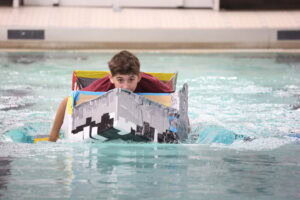
Form 1 Expedition-Based Interdisciplinary Course
What is the Power of Water?
Team-taught by science, history, and English teachers
Overview
In this expedition course, students in Form 1 will explore the Connecticut River watershed as we pursue the question, “What is the Power of Water?” From the icy mountain tributaries in the Berkshires to the saltwater estuaries near the Long Island Sound, students will conduct hands-on experiments along the riverbanks and interview various stakeholders who live and work next to rivers like the Farmington and Connecticut. As an interdisciplinary course and through the lenses of science, history, and literature, students will examine and explore both the literal and figurative power of water.
Content
Students will explore the history of settlement, conflict, and industrialization in Connecticut and along the river. As readers and writers, they will examine the inspiration that rivers have furnished for myth and literature. As scientists, they will conduct hands-on experiments and collect data across the Connecticut River watershed. Ultimately, students will synthesize their experience to tell their own stories of the river through the lens of a podcast, app, or literary magazine. Then in a culminating showcase, students will share their findings with the community.
Experience
In this course, students will use the Connecticut River as a classroom. While learning about subject material on campus, they will also have regular opportunities for place-based learning along the river and its watershed. By taking part in trash pickups, river and stream restoration, field tests, and dam removals, students will play their part in improving the life of the river. By studying artifacts and historical documents, they will understand how the river influenced the lives of past residents. And by writing about their own experiences, students will find their own lifelong connections to the river. Students will keep personal expedition journals, recording flora and fauna, along with writing their own narratives, poems, and creative responses.
Form 2 (8th Grade)
English
Focus on character development and developing coherent arguments in writing
Read the course descriptionEnglish 2 — Voices and Choices
Form 2 English students build on their strong foundation of previously established skills to meet the increased demands of reading and writing at a more sophisticated and complex level. Guided by the central theme of exploring the human experience, the literary focus is on character development with a gradually increasing emphasis on interpretation. Writing assignments encourage students to create fuller, more subtle prose by continuing to take a process approach to writing with particular emphasis on revision. Spider Web discussions are central to developing the ability to analyze and discuss literature, as well as the development of critical thinking, listening, and speaking skills. The study of grammar, sentence building, and vocabulary continue at a deliberate pace and remain intertwined with the students’ writing. Students respond creatively to various literary genres and practice developing coherent arguments by using direct references to the text in their writing. In keeping with the increased demands of the Form 2 year, students are challenged to apply the skills that they have learned to a variety of more complex texts.
History
Connect to current events and study the emergence of America as a nation
Read the course descriptionForm 2: Political Ideologies and The Twentieth Century
In this course, students explore America’s emergence as a modern nation with special attention to current events and their relationship to the past. Students examine major issues of the twentieth century as America evolved from an isolated agrarian nation to an international superpower in the atomic age. The course begins with exploring political ideology, focusing largely on how liberals and conservatives approach certain issues and problems. The goal is to understand different ideologies and then connect them to both past and present issues. We build on the theme of perspective, which is central to the Form 1 course and the study of history as a whole. Throughout the country’s history, has the “American Dream” been equally attainable for all citizens? Other topics include America’s urban and industrial growth, isolationism and imperialism, evolving political institutions, rapid social change, and the ongoing struggle for civil rights. In the process, students analyze contemporary global and local issues and America’s place in the world. Students will also study the rise of leaders and new systems in different countries, such as Josef Stalin in the USSR and Adolf Hitler in Germany. By evaluating primary-source materials such as documents, letters, political cartoons, and video footage, as well as literature and a variety of secondary sources, students engage fully in the learning process. With step-by-step guidance from teachers, students complete a fully documented research paper on a topic of their choice. Skills such as the insertion of footnotes using Chicago Style guidelines will prepare students for the research and writing demands that they will face throughout their academic careers.
Mathematics
Solidify arithmetic skills and deepen numerical literacy
Read the course descriptionAlgebra 1 Standard
This Form 2 course begins the formal study of algebra. Standard algebra topics are covered, such as multi-step equation solving, simplifying expressions using rules of exponents and properties of real numbers, linear and inverse variation functions, and quadratic patterns. Additionally, students develop an understanding of rational and irrational square roots. Students connect types of functions and contextual situations (including those where systems of equations and inequalities are applied), and they are expected to decipher each situation and understand the relationship between them. They then use these skills to solve problems, make predictions, and defend their reasoning. All the while, students continue to solidify arithmetic skills, improve numerical literacy, apply data analysis, and develop mathematical study skills. This course continues at a similar level and pace as the Form 1 and Upper Prep math courses. Students in this course who have attained a B- average or above, combined with the teacher’s recommendation, will be advanced to Geometry.
Algebra 1 Accelerated
Algebra 1 builds on the algebraic topics developed in Form 1 Mathematics, with a significant increase in pace and expectation. This high-school-level course focuses on linear, inverse variation, exponential, and quadratic functions. Students analyze the data tables, equations, and graphs in order to recognize the different functions according to their distinguishing features. The study of linear functions emphasizes solving equations in one variable and systems of equations in two variables, including inequalities. The quadratic portion of the course includes solving by factoring and the quadratic formula. In addition, the course includes the laws of exponents and the simplifying of radical and rational expressions. This course challenges students to discover and understand the why behind the how and to continue to develop their fluency with mathematical vocabulary to express their understanding. Algebra 1 Accelerated is designed for students who possess the necessary background, motivation and intellectual development to handle the increased complexities of a demanding one-year Algebra 1 course. Upon successfully completing this course, students advance to Geometry or Honors Geometry.
Science
Dive into chemistry lab and investigate motion and simple machines
Read the course descriptionForm 2 Science
The first half of the year will be chemistry-based, focusing on developing scientific reasoning and lab skills as the students dive into the details and true application of the scientific method. We then apply this knowledge to chemistry-based labs centered around mixtures and separating them utilizing characteristic properties. The final assessment asks the students to separate and identify the components of a complex mixture using minimal materials. The second half of the year will be physics-based, focusing on motion and using simple machines through open and guided inquiry.
Modern Language
Full-immersion style Options: Spanish & French & now Chinese too
Read the course descriptionAll Middle School students must choose a modern language or Latin to study, and they are placed in a level based on their background and language mastery. Placement tests are available to new students who have taken the language as a core academic course at their previous school to determine if they are ready for the next level. Students in Form 2 who are starting a new language may take Level 1 at the Upper School.
Spanish C
In Spanish C, students solidify their language foundation in preparation for Upper School Spanish. Spanish C students receive a comprehensive review of and build upon the material introduced in both Spanish A and B, along with any supplemental grammatical structures as needed. Additionally, students are expected to internalize common vocabulary and grammar patterns to advance their listening, speaking, reading, and writing skills. Over the year, students will transition from planned skits and presentations to more open and spontaneous conversation in the target language. Through exposure to varied and culturally authentic materials, students develop the important trait of cultural competency. Blogs, discussion boards, videos, and other technology allow students to extend their use of the language beyond the classroom.
Chinese 1 (open only to Form 2)
Chinese 1 is an Upper School course that is open only to Form 2 students who are interested in studying Mandarin Chinese. Students begin the year studying pronunciation, tones, and radicals, then quickly transition into the study of simplified characters. The course aims to develop students’ reading, writing, speaking, and listening skills, as well as give them a solid understanding of the basic principles of the Chinese grammatical structure. Discussions on history, culture, and issues in modern China give the students a complete context for language study.
French C
French C is the culmination of students’ middle school study of French. Their oral language skills have reached the level where student-to-student, authentic communication is possible. Students begin to build more complex and detailed sentences and compositions, allowing them to find their voices and express their personalities in the target language. By the end of the year, they will be able to differentiate between the simple past and imperfect verb tenses. Various vocabulary topics are discussed through the medium of current francophone films and popular English films in translation. Students develop their writing skills through the creation of self-directed, creative projects like creating a vacation scrapbook. Developing students’ cultural competency is a primary goal of this course; this is achieved through comparing and contrasting their own culture with those of various francophone countries, in addition to analyzing various authentic materials such as films, images, and news footage. FlipGrid technology allows students to extend their use of the language beyond the classroom, and various tools will be used to enhance each student’s experience including Google Classroom and Pear Deck.
Classics
Study Latin and Greco-Roman culture
Read the course descriptionAll Middle School students must choose a modern language or Latin (Classics) to study, and they are placed in a level based on their background and language mastery.
Latin C
In the third year of Middle School Latin, students prepare for a more rigorous study of Latin at the Upper School through even deeper explorations of the Latin language. They continue to learn Latin through reading, translation, writing, speaking, friendly competition, and Latin-based composition projects. Students advance their understanding of English through the study of derivatives. In the first semester, students continue learning about the expanse of the Roman empire that they began studying at the end of Latin B. Students examine the process of Romanization throughout the empire and discuss the rebellion of the British queen Boudica. After studying life in the northern part of the Roman empire, students begin discussing the influence of other areas of the Roman empire, including Spain and France. Students analyze the exchange of both ideas and material objects throughout these areas of the Roman empire. By the end of Latin C, students will also read a Latin novella and will learn about the institution of marriage within the ancient Roman world.
Creative Arts
Music, theater, visual, and media arts
Read the course descriptionFORM 2
Form 2 students should choose courses from either the Theater and Visual Arts electives or arts block electives that are offered in other disciplines, such as Robotics. In addition, all Form 2 students are required to take Life Skills 2 (a health and wellness course) during this block.
THEATER ELECTIVES
Advanced Public Speaking (Quarter)
The desired outcome of this course is to build leadership and confidence skills when speaking to a large audience, interpersonally persuading, and extemporaneously problem-solving. This course is designed to be a sequel to Form 1 Public Speaking but is not required. After reviewing the speech outline and the basic elements of delivery, students sharpen their skills by engaging in speech activities, including debates, impromptu speeches, informative delivery, persuasive delivery, etc. The most exciting part of this class is the final project in which students choose between running for president, selling a product, or choosing a crisis management situation – i.e., delivering bad news, negotiating, handling a difficult conversation, etc. This is a creative and engaging course that helps any speaker rise to the next level of competence and confidence.
Acting (Semester)
This course is an excellent choice for students interested in exploring and developing their skills as an actor. Students will have the opportunity to learn how to read and interpret a script, basic acting skills, and stage movement, as well as a behind-the-scenes look at how a theater operates. During this course, students will also work on a short dramatic work to be performed at the end of the semester.
VISUAL ARTS ELECTIVES
Ceramics (Quarter)
This course introduces students to clay as an artistic medium. In this course, students will use hand-building techniques and processes to create projects that are both sculptural and functional. Students will experience a variety of clay projects designed to develop their technical skill, explore their visual expression, and learn about the exciting creative possibilities within the ceramic process.
Digital Art (Quarter)
In this course, students will advance their knowledge of graphic design and media arts. Building upon their foundation from UP Technology, Coding, and their digital art lessons from the visual arts studio, students will tackle more advanced graphic design and digital art projects. Students will learn how to turn their own technology devices into art-making tools as they explore the many creative possibilities within the Google Suite of Apps, along with an online photo editing program and other accessible graphic manipulation programs. Each student will be encouraged to develop their own digital arts vocabulary, strengthen their problem-solving skills and foster their artistic voice while also building skills they can merge into academic presentations and projects in their other courses.
Drawing (Quarter)
In this course, students will advance their drawing and design skills by studying the fundamental elements and principles, including observational drawing and abstract concepts. Using various materials and methods, students will be encouraged to develop their own drawing vocabulary, strengthen their problem-solving skills and develop an artistic voice.
Painting (Quarter)
This painting course builds upon students’ visual and technical foundation and introduces them to advanced painting techniques and a sophisticated study of color and paint mixing. This course focuses on visualizing and interpreting images on a two-dimensional surface and builds problem-solving skills. Students will work with a variety of media that include acrylic paint and canvas. The course will engage students with both abstract and representational art – exploring the ways that color, drawing, and composition can add meaning to what we see.
Printmaking (Quarter)
This course introduces students to the world of printmaking by introducing them to the basic printmaking methods of intaglio, relief, and mono-printing in both historical and contemporary applications. Students will explore each of these techniques, as well as ways in which they may be combined. They will learn how to translate their drawings and ideas into prints by exploring mark-making while further developing the form and visual content of their composition. Throughout the class assignments, the focus will also be placed on building and developing an artistic voice, creative problem solving, and the process of critique.
Sculpture (Quarter)
Sculpture students explore ways to construct three-dimensional artwork and consider how an object can represent ideas. Various materials and processes are introduced as students design and build their sculptures. Emphasis is not only placed on physical construction and structure but also on the problem-solving skills needed to work in the third dimension. Students are challenged to create work that communicates their own ideas and are encouraged to find their own artistic voices.
FORM 2 MUSIC BLOCK ELECTIVES
All Form 2 students are required to participate in one of these music electives. Form 2 students may also elect to participate in both Band/Orchestra and Cantabile.
Cantibile (Year, meets twice per week)
Cantabile is the largest of the four middle school choirs. Individual musicianship is an important goal, as members perform repertoire from various periods and countries and commissioned works from acclaimed composers. Students further develop sight-reading, ear training, and harmonic skills, as well as healthy vocal techniques. This ensemble participates in the all-school Choral Expo concert in January, the Middle School Choral Fest concert in the Spring, and occasionally performs off campus. This choir often works closely in master classes and workshops with visiting composers, conductors, and clinicians. Open to students
in Forms 1-2.
Octopipers and F2B (Year, meets once per week)
These select ensembles perform commissioned works and published music in the jazz, pop, contemporary, Broadway and a cappella genres. Selected by audition, this ensemble participates in the all-school Choral Expo concert in January, the Middle School Choral Fest concert in the Spring, school-day performances, and occasionally performs off campus. Students utilize sight-reading, ear training, harmony, vocal techniques, and choreography throughout the year. Membership in Cantabile is not required. Both ensembles rehearse after school. Octopipers is open by audition to girls in Forms 1- 2, and F2B is open by audition to boys in Forms 1-2.
Concert Band (Year, meets twice per week)
This course is open to all woodwind, brass, and percussion players. Ensemble skills are developed through a varied repertoire. The Concert Band performs during assemblies, concerts, and special trips and events. Students in concert band must know how to play a band instrument. Open to students in Upper Prep-Form 2.
Jazz Band (Year, meets once per week)
This course is open by audition to woodwind, brass, and percussion players as well as pianists, bassists, and guitarists. Emphasis is placed on developing skills in the jazz, rock, and Latin musical traditions. In addition to ensemble skills, students explore various approaches to improvisation. Open to students in Form 1-2. With the exception of pianists, guitarists, and bassists, all Jazz Band members must participate in the Concert Band.
String Orchestra (Year, meets twice per week)
The String Orchestra is open to all experienced string players (violin, viola, cello, and double bass). Ensemble skills are developed through a varied repertoire. The String Orchestra performs in KO’s Candlelight Concerts, a spring concert, special events, and school assemblies. Selected players also perform with Upper School students. Open to students in Upper Prep- Form 2.
Music and Media (Year, meets twice per week)
In this course, students explore music through various topics, including creating music for video, composition software, beat making, and sequencing. Students also learn simple improvisational skills through live performances. Open to students in Form 1 and 2.
Technology
Explore Robotics through building, coding, and solving community problems
Read the course descriptionRobotics A (Quarter)
This introductory course is designed for any Form 2 student who would like to explore the field of robotics, coding, and physical building. Students will learn the basic tools to complete simple challenges and commands. They will document their process of thinking, research online solutions, and learn how to seek out help from others. They will do some small building of robots and learn how to program them accordingly. This course is designed for students who have little to no experience.
Robotics B (Quarter)
This course is designed for those Form 2 students with significant experience with coding or robotics. These students have been exposed to the robotics process, understand its challenges or unknowns, and can seek out solutions, be proactive and advocate for themselves. They are familiar with the research process, can test out ideas, keep copious notes and seek out resources. These students will solve a community problem by using robotics. They will brainstorm and pick the problem and work together to find a solution. They will present their findings to the community. It is possible for students to first take Robotics A and continue with Robotics B.
Affective Curriculum
Identity and student self-reflections
Read the course descriptionLife Skills Form II (Quarter)
In Life Skills Form II, our Middle School counselor meets with all Form II students for one quarter to explore developmental issues that affect early adolescence and to reinforce the larger curricular goals of developing their social and emotional literacy. Through group discussion, team-building exercises, role-playing, collaborative projects, and journaling, and in a final capstone project, students reflect on their Middle School experience and who they are as individuals, classmates, and citizens of the community and world. The theme of this course is identity.
What a Difference a Challenge Makes
Course of Study
What a Difference A Course Makes
English
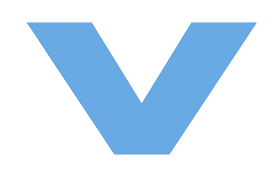
Science

Mathematics

History

Modern Languages

Classics

Creative Arts

Technology

Health & Wellness

